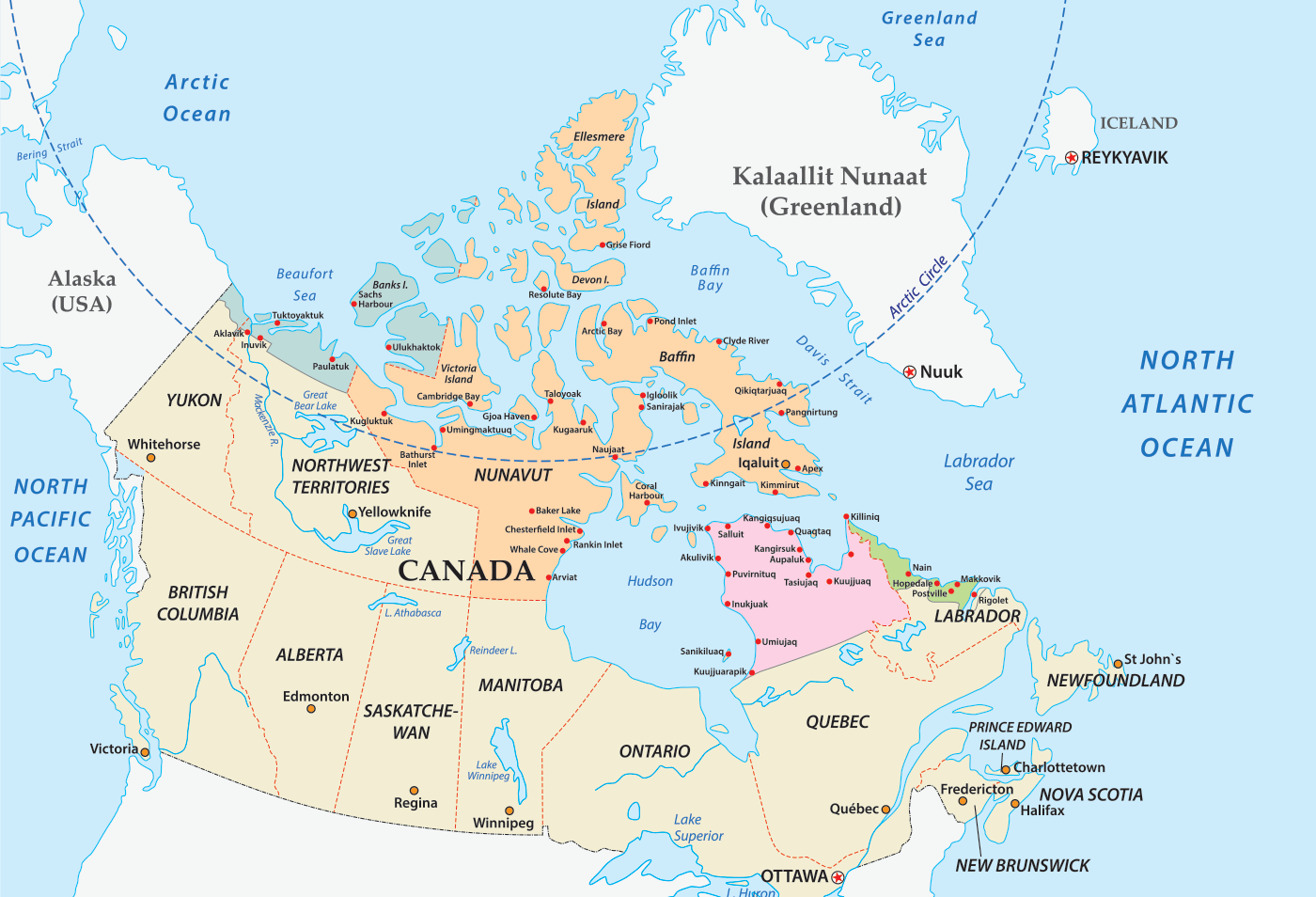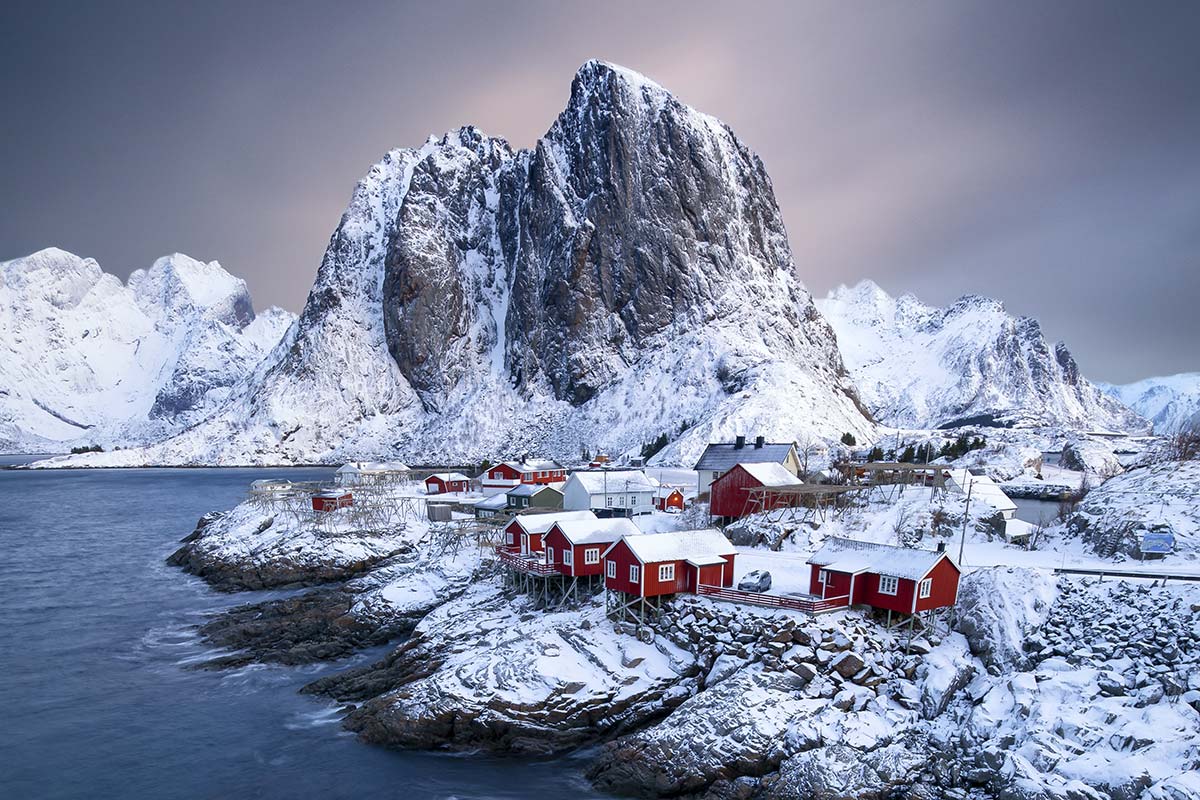High Arctic Canada
Big, Beautiful, With So Much to Discover
The second largest country in the world by land area, Canada consists of ten provinces and three territories, which stretch from the Atlantic to the Pacific and northward into the Arctic Ocean. Canada has been inhabited by Indigenous peoples for thousands of years. From the 16th century onward, British and French settlers arrived. Canada is officially a bilingual country with English and French both having official status. The newest Canadian territory is Nunavut, which separated from the Northwest Territories on April 1st, 1999. It is also Canada’s largest, northernmost, and least populous territory.

A History Shaped by Exploration
Paleo-Eskimo cultures first arrived around 4,000 years ago. These early settlers, believed to be the ancestors of today’s Inuit, adapted to the extreme Arctic environment through innovative hunting techniques and a deep knowledge of the land and sea. Over time, various cultures, including the Dorset and Thule peoples, left their mark on the Arctic landscape, as evidenced by archaeological sites scattered across the region.
The Thule people, ancestors of the modern Inuit, migrated from Alaska to Arctic Canada around 1,000 years ago, bringing with them advanced tools and hunting technologies, the beginning of a long and enduring relationship between the Inuit and the Arctic. In the 16th century, explorers like Martin Frobisher and John Davis sought the elusive Northwest Passage—a route connecting the Atlantic and Pacific Oceans. The fur trade soon became a major economic driver in the region.
Today, Arctic Canada is a place where ancient traditions continue to blend with modern life.
Its remoteness and harsh environment meant it remained largely uninhabited for centuries, only recently becoming more significant due to its meteorological importance and use by the Norwegian Armed Forces. The settlement of Olonkinbyen was established to house the personnel responsible for maintaining the island’s infrastructure and weather stations, a vital part of Arctic weather forecasting.
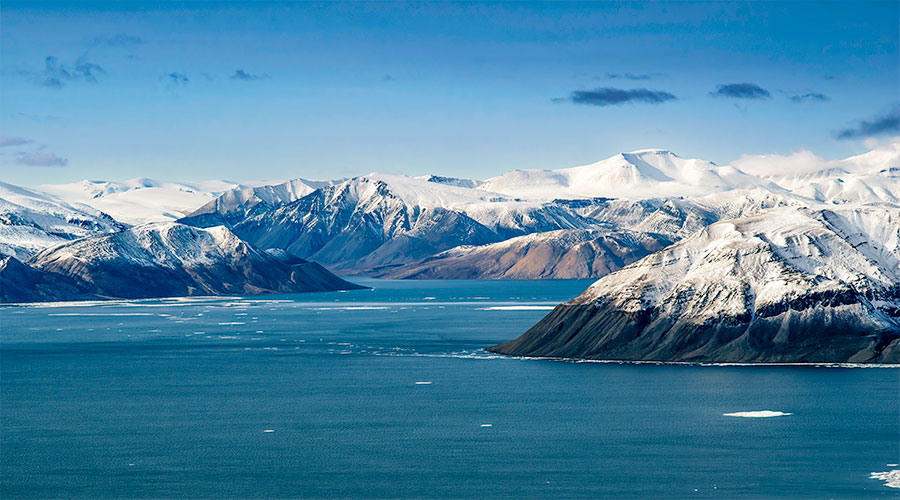
A Vast, Record-Setting Geography
Canada stretches from the Atlantic to the Pacific Ocean and all the way up into the Arctic. It has the world’s longest coastline, at almost 250,000 kilometers, and also has the longest land border in the world, an almost 9,000 km long frontier with the United States. Canada spans 41.5° of latitude – more than any other country. Canada’s northern regions are characterized by a mixture of land and sea, while the Canadian Arctic Archipelago contains three of Earth’s ten largest islands. Baffin Island alone covers 507,000 square kilometers – more than twice the size of Great Britain!
In the north, vast tracts of land are permanently icebound, yet the majority of the world’s liquid fresh water can be found in the 2,000,000 lakes scattered across Canada’s vast landscape.
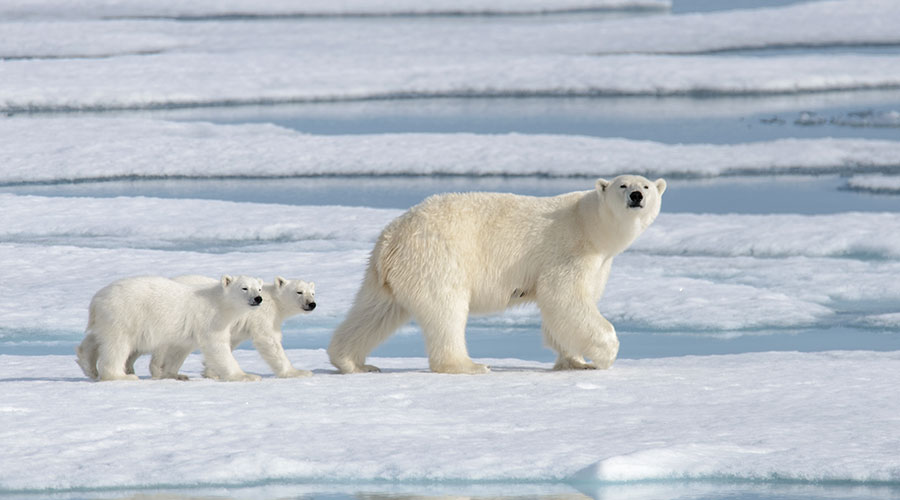
Resilient Wildlife
This remote region, with its expansive tundra, icy waters, and towering glaciers, is home to some of the most resilient species on Earth. Whether you’re hoping to catch a glimpse of the elusive Arctic fox or watch a pod of narwhals surface through the icy waters, Arctic Canada offers a window into a world where nature reigns in its purest form.
Arctic Canada is one of the best places in the world to see polar bears in their natural habitat. Polar bears are most commonly found on the shores of Hudson Bay, Baffin Island, and along the Arctic coastline. The population is estimated to be around 15,000 bears, about two-thirds of the world’s polar bears.
Arctic Canada is also home to a variety of seabirds, including the thick-billed murre and the northern fulmar, which nest in large colonies on cliffs during the summer months. In the warmer months, migratory birds like the snowy owl and Arctic tern return to breed. The Arctic tern makes one of the longest migrations of any bird, flying from the Arctic to the Antarctic and back each year.
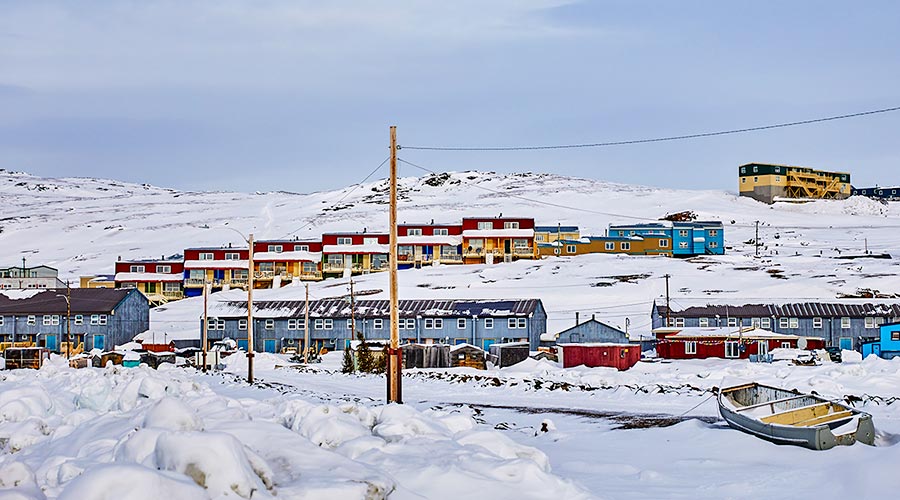
Canada Is Known for Its Harsh Winters
The climate of the Canadian Arctic is characterized by long, brutally cold winters and short, cool summers. Iqaluit, Nunavut’s capital, has an average July temperature of 54°F (12°C) and a February average temperature of -25°F (-32°C).
Expeditions That Include High Arctic Canada
Lorem ipsum dolor sit amet, consectetur adipiscing elit. Vestibulum sed dui purus. In tempor felis nec justo congue consectetur. Pellentesque imperdiet venenatis justo ut scelerisque. Suspendisse ex nulla, vulputate ut dapibus in, dignissim in sem.

